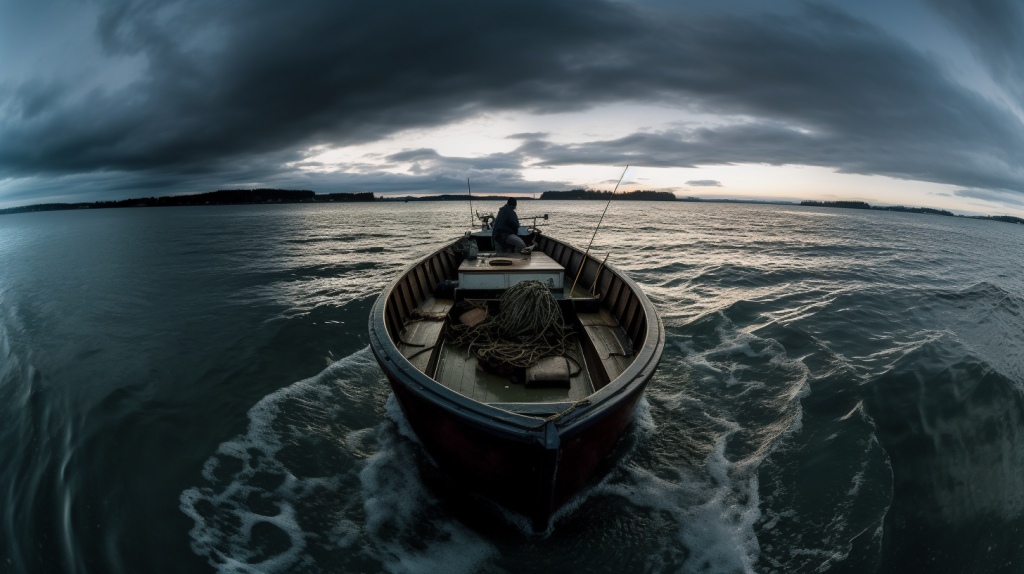The Pacific Northwest, a region known for its rugged coastline, lush forests, and striking mountain vistas, also holds a deep fascination for those interested in cryptozoology. It is here, in the cold waters of Cadboro Bay, that a mysterious sea serpent named Caddy, short for Cadborosaurus, has reportedly made its home. With sightings dating back over a century, the legend of Caddy has stirred imaginations and speculation among locals, scientists, and cryptozoologists alike.

First Sightings and Early Reports
The Cadborosaurus’s story begins in the early 20th century, with numerous reports from fishermen, sailors, and residents along the coast of British Columbia. Described as a large, serpent-like creature with humps on its back and a horse-like or camel-like head, Caddy quickly became a fixture in local lore. Some accounts even suggested the creature was over 30 feet long.

As word of the sightings spread, more people began reporting encounters with the sea creature. Sightings peaked in the 1930s, with a flurry of reports detailing encounters from Alaska to Oregon. These early accounts did more than simply ignite local interest; they caught the attention of the broader scientific community.
Scientific Interest and Skepticism
The numerous and relatively consistent descriptions of Caddy spurred some scientists to take these reports seriously. They hypothesized that the creature could be an undiscovered species, perhaps a relic from the age of the dinosaurs or a kind of giant sea serpent.
One of the most tantalizing pieces of evidence came in 1937 when a supposed Cadborosaurus carcass was reportedly found inside the stomach of a sperm whale. The Naden Harbour carcass, as it became known, was examined by scientists who suggested it could be a fetal baleen whale. However, the specimen was lost, and its true nature remains a subject of debate.
Despite the intriguing accounts and circumstantial evidence, many in the scientific community remain skeptical. They point out that the Pacific Northwest is a well-studied region with no confirmed large aquatic cryptids and argue that the sightings can be explained as misidentifications of known animals, such as sea lions, basking sharks, or giant oarfish.
Contemporary Sightings and Ongoing Investigations
The legend of the Cadborosaurus, affectionately known as “Caddy,” lives on today with a number of sightings reported by boaters, fishermen, and shoreline observers. While there is still debate about the creature’s existence, its story continues to capture the public’s imagination, and it remains the focus of dedicated search efforts by groups like the British Columbia Scientific Cryptozoology Club (BCSCC).
The BCSCC, inspired by the mystery surrounding elusive creatures like Caddy, seeks to scientifically validate the existence of the Cadborosaurus. In spite of the variations in descriptions of Caddy over the years – from reptilian to amphibian, and sometimes more mammalian – the club has adopted a specific interpretation. They associate the term Cadborosaurus with the more mammalian description, largely based on the 1937 discovery of a peculiar carcass in Naden Harbour, Haida Gwaii, which many believe closely matches the majority of witness accounts.
The creature, as most accounts describe, is akin to a 30- to 70-foot long snake with a horse-like head and four webbed flippers. The BCSCC speculates that if Caddy does exist, it may originate from Alaska. This assumption is drawn from numerous sightings in Alaska and the local Indigenous groups’ descriptions of a similar mythical creature.
To try and capture definitive evidence of Caddy, the BCSCC maintains cameras at strategic points such as Deep Cove, in Saanich Inlet, which have been in operation since 1999. Their most recent digital iterations run continuously, day and night.
Despite skepticism and numerous challenges, the BCSCC continues its mission. “We don’t want to prove this to anybody except for our own personal satisfaction, to ensure they are catalogued and their habitats are conserved. We certainly wouldn’t want the Cadborosaurus species to die off,” says John Kirk, co-founder and treasurer of BCSCC. Thus, each new report and ongoing investigation ensures the legend of Caddy remains alive and continues to intrigue a new generation.
Conclusion: A Lasting Legend
The story of Caddy, the Cadborosaurus, is more than a tale of a sea monster. It’s a piece of Pacific Northwest heritage, a touchstone of local culture, and a captivating mystery. Whether Caddy is a yet-to-be-discovered species, a misidentified known animal, or simply a tall tale, its legend continues to be a source of wonder, debate, and regional pride. As long as people venture out into the cold, mysterious waters of the Pacific Northwest, the legend of Caddy, the elusive sea serpent, is likely to endure.
Further Reading and Exploration
The tale of Caddy, the Cadborosaurus, is filled with rich history, intriguing sightings, and ongoing investigations. If this story piques your interest and you’d like to delve deeper into the legend, there are numerous resources available online:
- Cadborosaurus Canada: A comprehensive site dedicated to all things Cadborosaurus.
- Wikipedia: Cadborosaurus: The Wikipedia page for Cadborosaurus provides an overview of the creature, its reported sightings, and cultural significance.
- British Columbia Scientific Cryptozoology Club: This page provides details of the BCSCC’s investigations and findings related to Caddy.
- Tetrapod Zoology: The Case of the Cadborosaurus Carcass: An in-depth review and discussion of Cadborosaurus sightings and findings.
- Victoria News: B.C. group on the hunt for Cadboro Bay sea monster: An article detailing the dedicated efforts of the BCSCC in their search for Caddy.




